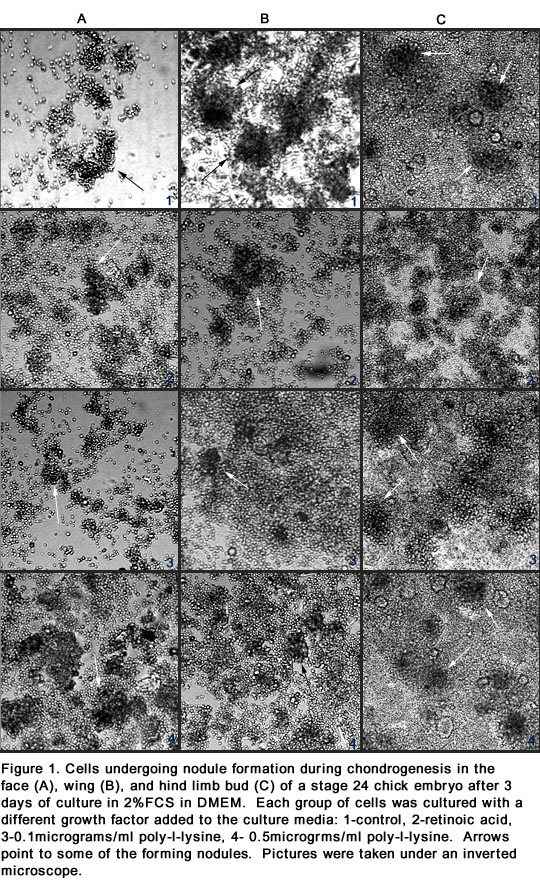|
|

|
and wing cells (Figure 1 B2 & C2).
The field of view counted for the inverted scope images was
only a 8.8 x 6.7 inch (in photoshop with resolution of 72
pixels/inch) portion of the whole drop. The same size area
was counted in each instance.
Treatment with two
concentrations of poly-l-lysine proved the most successful
in our experiment. As visualized under the bright field
microscope after Alcian Blue staining, the 0.1mg/ml and
0.5mg/ml concentration of poly-l-lysine stimulated
chondrogenesis in both the wing and hind limb (Figure 2 B3,
B4, C3, & C4). It didn't seem to make a difference what
concentration we used. Both showed similar results. However,
under the inverted scope, the cell counts in the specified
area were similar to the RA-treated cell counts. These face
poly-l- lysine counts were also very similar to the same
counts for wing and hind limb cells treated with
poly-l-lysine (Figure 1 A3 & A4).
Additionally, we attempted
to treat all wells with guanidine HCl in order to remove the
Alcian Blue stain from the cells, as suggested in Ting-Xin
et al. (1992). The guanidine HCl did not work in this
manner. Therefore, we were not able to measure the amount of
dye absorbed by the nodules through use of a
spectrophotometer.
Given the time constraint,
it was not possible to pinpoint the cause and correct the
problem of facial cell adherence. For future
experimentation, several possible solutions to this problem
present themselves. Since, fibronectin adheres to the ECM
and allows the cells to adhere to the well, one solution may
be to coat the bottom of the wells with fibronectin prior to
adding the sample of facial cells. Additionally, previous
experiments have shown that wing and hind limb buds react
differently to different serums (Downie & Newman
1994&1995). As the crainofacial cells may also react
differently, one approach to promoting cell adherence would
be to culture face cells in several different types of serum
to determine which is most effective.

|
|